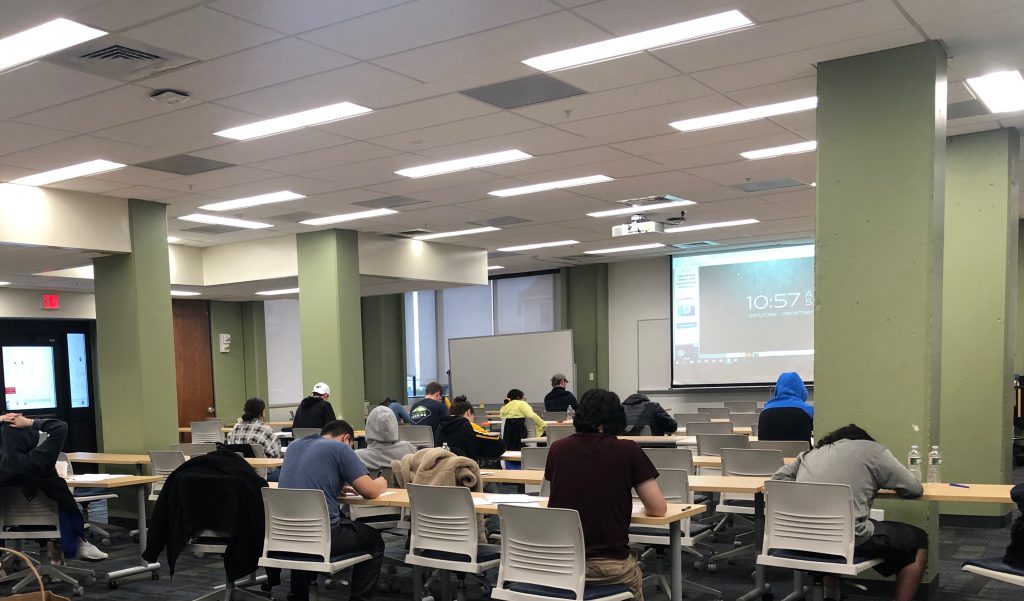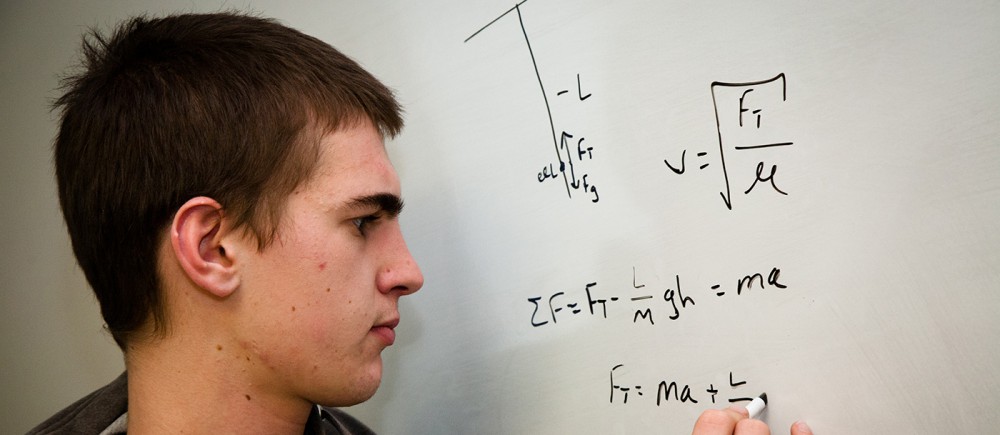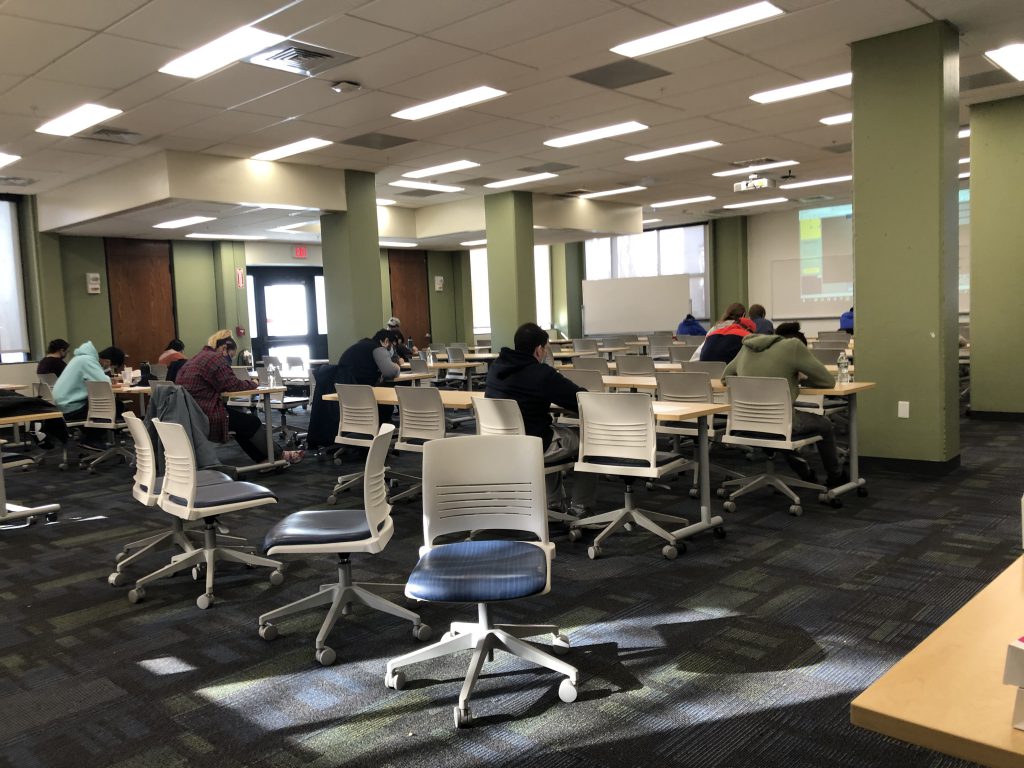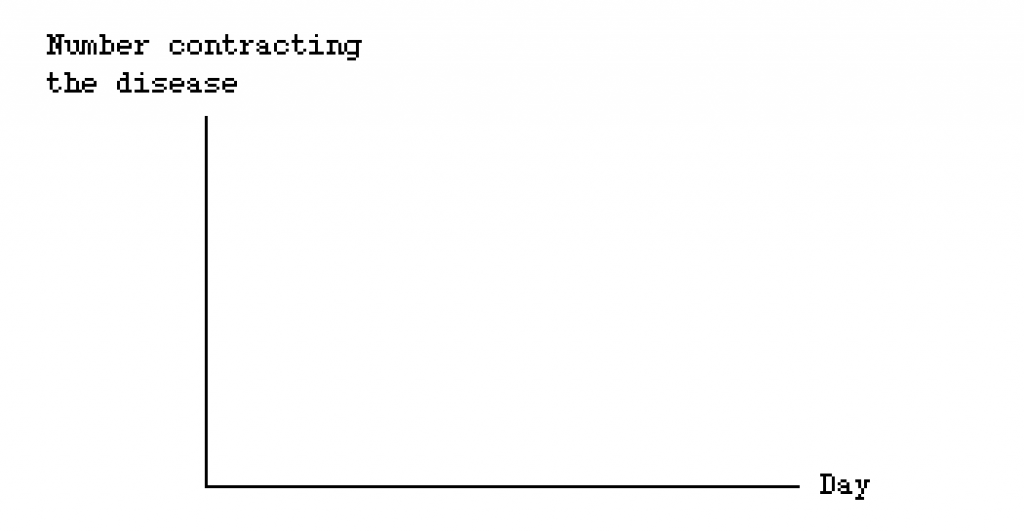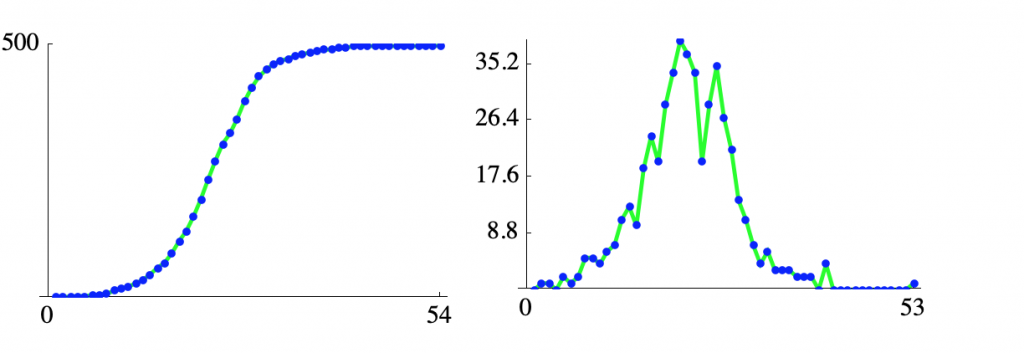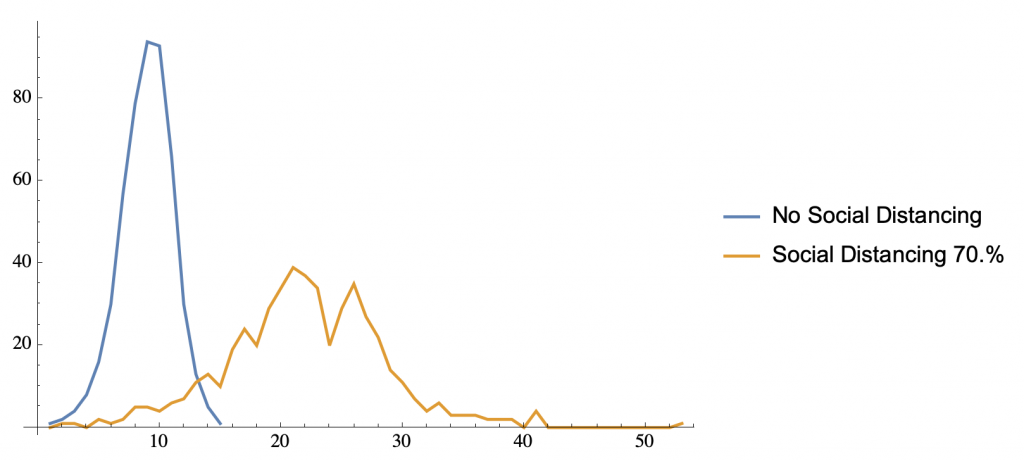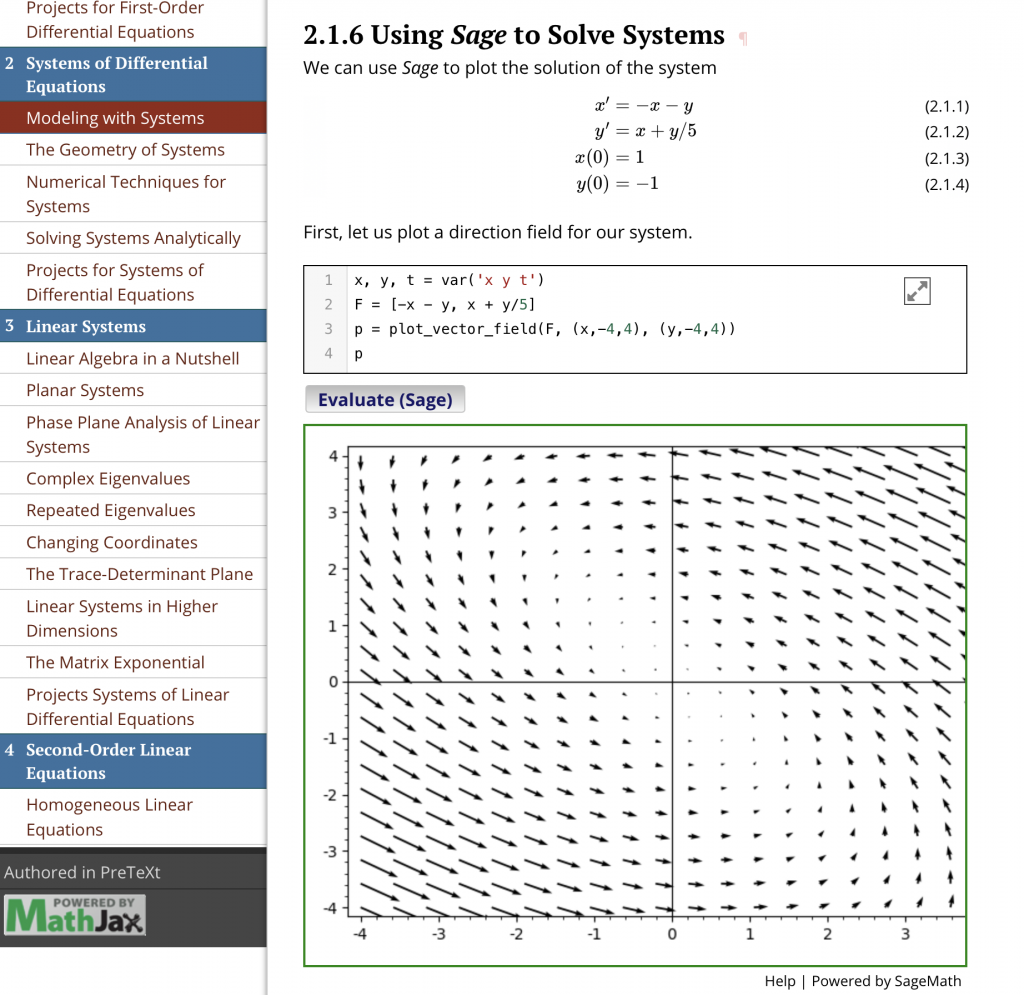This the third in a series of posts related to teaching mathematics during the Covid-19 pandemic.
Introduction
There have been many different approaches to Emergency Remote Teaching. Here is one that, in my opinion, has reasonably approximated face-to-face meetings. I make no claims that this is superior to any other approach — it just seems to work with a the majority of my students. I welcome comments on variations you might be trying.
First let me describe how the class had been run before spring break. And then describe how it has changed since then. I am describing a section of Discrete Structures I, with 32 active students at the time of spring break.
Face to face format
Here is how class meeting n was conducted. About a week before the class was to meet, usually the date of class n-2, I gave the students a reading assignment. This normally consisted of reading one or two sections from our text. I used Piazza to communicate these assignments to the students. Piazza was a fairly small part of the course. I used it to assign the reading assignments and to answer questions students may have had on them. After doing the reading, students were asked to answer a question about the material, and usually one or two short exercises. The assignment was due on the day of class meeting n -1. Most student turned in there work on a single sheet of paper. I graded the assignments as soon as possible after that class, and returned the work at the start of class n. More on grading later.
In class n, I made comments on the reading assignment and answered questions. This tended to take 10 to 15 minutes. Then the bulk of the class is spent working on more challenging problems on class n topics. We meet for one hour 15 minutes, so for about 45 minutes students work in groups of 4-6 on these problems. I circulated around the room answering questions and giving hints. When a group had a correct solution to any problem they would share it. We were in a TEAL classroom, so students would usually use the virtual whiteboard or display their computer screen with solution. Occasionally I would interrupt the class to show them a solution but, normally we would wait for the last 15 minutes to come together and discuss solutions.
This format seemed to work pretty well. We had one hour exam during the face to face portion of the course. The questions were comparable to prior semesters’ exams, and the grades were considerably higher this semester. Most students also seem to enjoy the format.
The sudden change to a virtual classroom
We had about a week to decide how to the respond to the crisis, and here is how things changed. There has been no need to change the rhythm of assignments. Most students routinely turn in their assignments on time. I’ve made the adjustment of requesting their work by noon on the day of the class as opposed to at the class meeting and submissions are all done by email. Why email? More on that later. Naturally , the big change has been in the actual class meetings. We meet on Zoom for our 75 minute meetings. Again, in the first 10 to 15 minutes I make comments and respond to student questions. In face to-face meetings, attendance was good and students sat at “pods” that had a capacity of six students. In our virtual meetings attendance has been lower. Typically, there have been 20-24 students who attend. To maintain continuity, I distribute students into three Breakout rooms according to the pods they sat in during the face-to-face meetings to maintain some consistency. Should I teach online in this format again I would just distribute them into smaller groups, using Zoom’s randomization. Over the course of 45 minutes, I drop into each breakout room 2-3 times to answer questions and check students’ progress.
Piazza now plays an important role in the class. Once a pod has settled on a solution, one of the students posts it on Piazza as a response to a question posed to the pod. Other students can refine the solution, if needed. During the breakout sessions, I monitor the solutions in real time. When a correct one appears, I endorse it, pin it (posts can be pinned to single them out ), and make the post available to the whole class. By the end of the breakout session, some problems will typically be completed. In the last 10 to 15 minutes of class time students come back from groups and we discuss some of the problems. Students are encouraged to settle any remaining problems later. They are also encouraged to check out solutions that have been pinned.
Piazza
Piazza.com offers course sites for free. The courses are categorized according to university so that faculty and students who are in more than one course that uses Piazza can access all courses with one login. In Piazza, students and instructors communicate through postings that are categorized as announcements, questions, or polls. Every posting is characterized according a system of folders. For a class that will meet on a given date, the reading assignment prior to that class and the day’s questions are all classified in a folder with that date. This makes filtering of postings during any given class easy to do since the mass of postings can be a bit confusing. Questions posed by either the instructor or a student can be responded to by any student in the class if it is globally available, or for any student in a group if it is a group posting. In setting up Piazza for the virtual classroom I created groups according to pairs of pods to match the pod structure within the class. I’ve only used polls a few times to get basic information like connection availability and students’ views on pass/fail, which had been debated at the time.
Grading
Grading of reading assignments would appear to be a daunting task since each student submits work for each class. However, I am following suggestions from [1] and treat the assignments as formative assessments. Essentially if a student puts in a reasonable effort even though their answers are generally incorrect they get full credit. Many of the incorrect answers reveal misconceptions that can be addressed quickly at the beginning of class. Occasionally I will create a short video using Camtasia to deal with misconceptions. Students get a grade of “Check,” which is full credit in most cases. Roughly 10% of submissions have been deemed to be subpar and get a grade of “check minus,“ which is half credit. I don’t tell students, but as long as they pass in a piece of paper or, when online, a photo of their work, they get half credit for almost anything. The stakes are quite low and most papers take a very short time to assess. When the class was face-to-face I would do this immediately after class and it would take less than an hour.
Online grading and email
In virtual mode, I have found that the most efficient way to receive and assess students’ work it is through email. Although it creates a lot of email messages, I have developed a routine that makes it far more efficient to do this as opposed to using something like a Dropbox in Blackboard. Here are the steps I take using my iPad.
- Opening a message from a student, I press on the photo or PDF and this brings up the option “Markup and Reply“.
- With a combination of text and virtual marker, I make quick comments including the check or check minus grade.
- I then select “done“ which gives me the option to reply to the email message. Usually, I send with no additional comments in the body of the message. Just the marked up photo/PDF.
- I then archive the student’s message, and immediately record the grade in a spreadsheet.
The whole process can take as little as 30 seconds. I rarely need more than two minutes for any submission. I do have to resist longer comments and reserve them for class discussions and/or quick videos which will cover all of the comments that I would normally make individually. Students get their work back faster in the virtual format than face-to-face where I would normally pass the assignment back at the beginning of class n.
Conclusion
Is this virtual format as effective as the face-to-face version? Probably not, but I think it’s a reasonable approximation. I certainly prefer meeting face-to face. Roughly one quarter of the students who were active and passing the course before we moved online are marginal participants in the class activities. I’ve been in contact with several who say that they have had difficulty with the situation for various reasons. Around half of the no-shows in Zoom sessions are still keeping up with submissions of reading assignments, The only value added dimension of the online format is better archiving of student work during problem sessions using Piazza. In theory, the technology embedded in the TEAL classrooms could be used to capture some of this, but that wasn’t happening.
Reference
David Pengelley, “From Lecture to Active Learning: Rewards for All, and Is It Really So Difficult?,” The College Math Journal, January 2020, 51 no. 1, 13–24, doi.org/10.1080/07468342.2020.1680228
